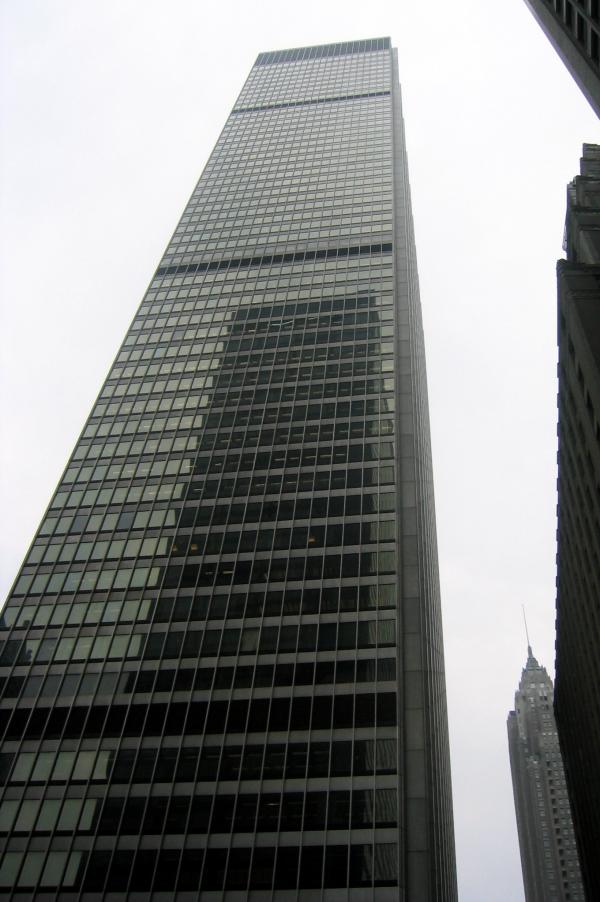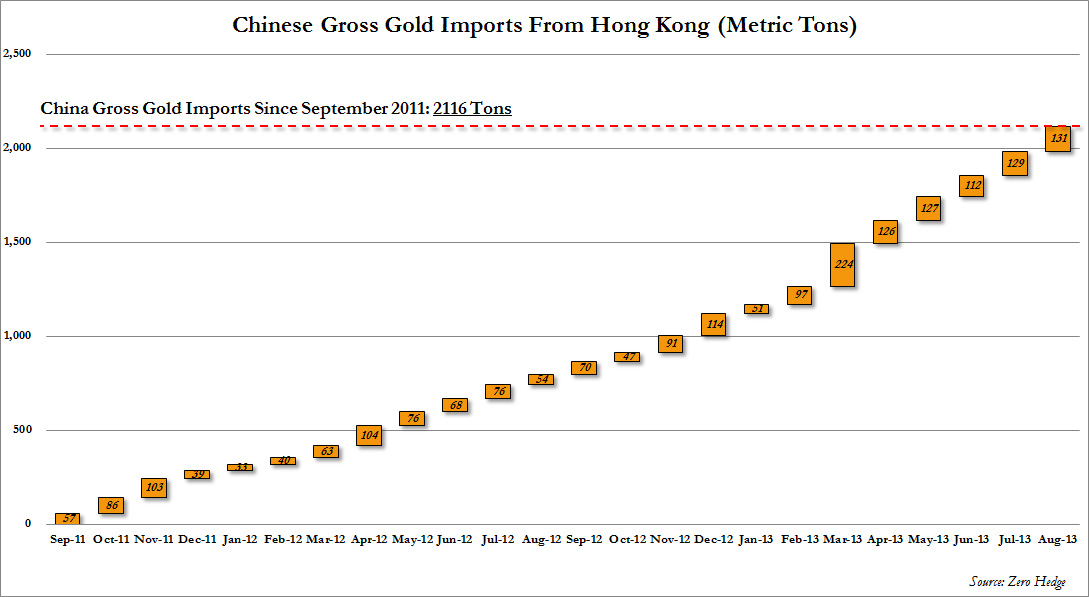– China’s Largest Conglomerate Buys Building Housing JPMorgan’s Gold Vault (ZeroHedge, Oct 18, 2013):
In what is the most remarkable news of the day, which has so far passed very quietly under the radar, Fosun International, China’s largest private-owned conglomerate which invests in commodities, properties and pharmaceuticals also known as “Shanghai’s Hutchison Whampoa”, announced in a statement filed just as quietly with the Hong Kong stock exchange, that it had purchased JPM’s iconic former headquarters, the tower built by none other than David Rockefeller, at 1 Chase Manhattan Plaza for a measly $725 million.
Here is Bloomberg described the transaction:
Over the past year, other Chinese developers and wealthy investors have been buying real estate in the U.S.
China Vanke Co., the biggest homebuilder listed in mainland China, said in February it joined a residential real estate venture in San Francisco. The families of Zhang Xin, co-founder of Soho China Ltd. (410), the biggest developer in Beijing’s central business district, and Brazilian banking billionaire Moise Safra this year bought a 40 percent stake in New York’s General Motors Building.
The landmark 1 Chase Manhattan Plaza, designed by architect Gordon Bunshaft and built in the 1950s, was once the headquarters of Chase Manhattan Bank. Rockefeller, as head of the bank’s building committee, selected the site and oversaw its construction.
JPMorgan intends to relocate about 4,000 employees, most of the people who work in the 60-story skyscraper, to other New York locations, Brian Marchiony, a spokesman, said in August. JPMorgan occupies about half of its space.
None of this is particularly newsworthy What is, however, is what Zero Hedge exclusively reported back in March, namely that the very same former JPM HQ at 1 Chase Manhattan Plaza is also the building that houses the firm’s commercial gold vault: incidentally, the largest in the world.
What do we know about 1 Chase Manhattan Plaza. Well, aside from the fact that the 60-story structure, built in the 1950s, was the headquarters of the once-legendary Chase Manhattan corporation, and which when it was built was the world’s sixth tallest building, not much.
So we set off to learn more.
To learn more, we first went to the motherlode: the Landmarks Preservation Commission, whose report on 1 CMP describes everyone one wants to know about this building and then much more, such as that:
One Chase Manhattan Plaza combines three main components: a 60-story tower, a 2½ acre plaza, and a 6-story base, of which 5 floors are beneath grade.
So the old Chase HQ, once the stomping grounds of one David Rockefeller, and soon to be the other half of JPMorgan Chase, has 5 sub-basements, just like the NY Fed…
Reading on:
Excavations, said to be the largest in New York City history, reached a depth of 90 feet
Or, about the same depth as the bottom-most sub-basement under the NY Fed…
But then we hit the jackpot:
Originally constructed with white marble terrazzo paving and enclosed by a solid parapet of white marble travertine that was personally selected by Bunshaft in Tivoli, Italy, the L-shaped plaza levels the sloping site and conceals six floors of operations that would have been difficult to fit into a single floor of the tower, including an auditorium seating 800 [and] the world’s largest bank vault.
And there you have it: the JPM vault, recommissioned to become a commercial vault, just happens to also be the “world’s largest bank vault.”
Digging some more into the curious nature of this biggest bank vault in the world, we learn the following, courtesy of a freely available book written by one of the architects:
On the lowest level was the vault, which rested directly on the rock – the “largest bank vault in the world, longer than a football field.” It was anchored to the bedrock with steel rods. This was to prevent the watertight, concrete structure from floating to the surface like a huge bubble in the event that an atomic bomb falling in the bay would blow away the building and flood the area.
In other words, the world’s biggest bank vault, that belonging to the private Chase Manhattan empire, and then, to JPMorgan, was so safe, the creators even had a plan of action should it sustain a near-direct hit from a nuclear bomb, and suffer epic flooding (such as that from Hurricane Sandy).
* * *
So, what the real news of today is not that JPM is selling its gold vault, we knew that two months ago, or that it is outright looking to exit the physical commodities business, that too was preannounced. What is extremely notable is that in one very quiet transaction, China just acquired the building that houses the world’s largest gold vault.
Why? We don’t know. We do know that China’s gross gold imports from Hong Kong alone have amounted to over 2000 tons in the past two years. This excludes imports from other sources, and certainly internal gold mining and production.
One guess: China has decided it has its fill of domestically held gold and is starting to acquire gold warehouses in the banking capitals of the world.
For now the reason why is unclear but we are confident the answer will present itself shortly.

